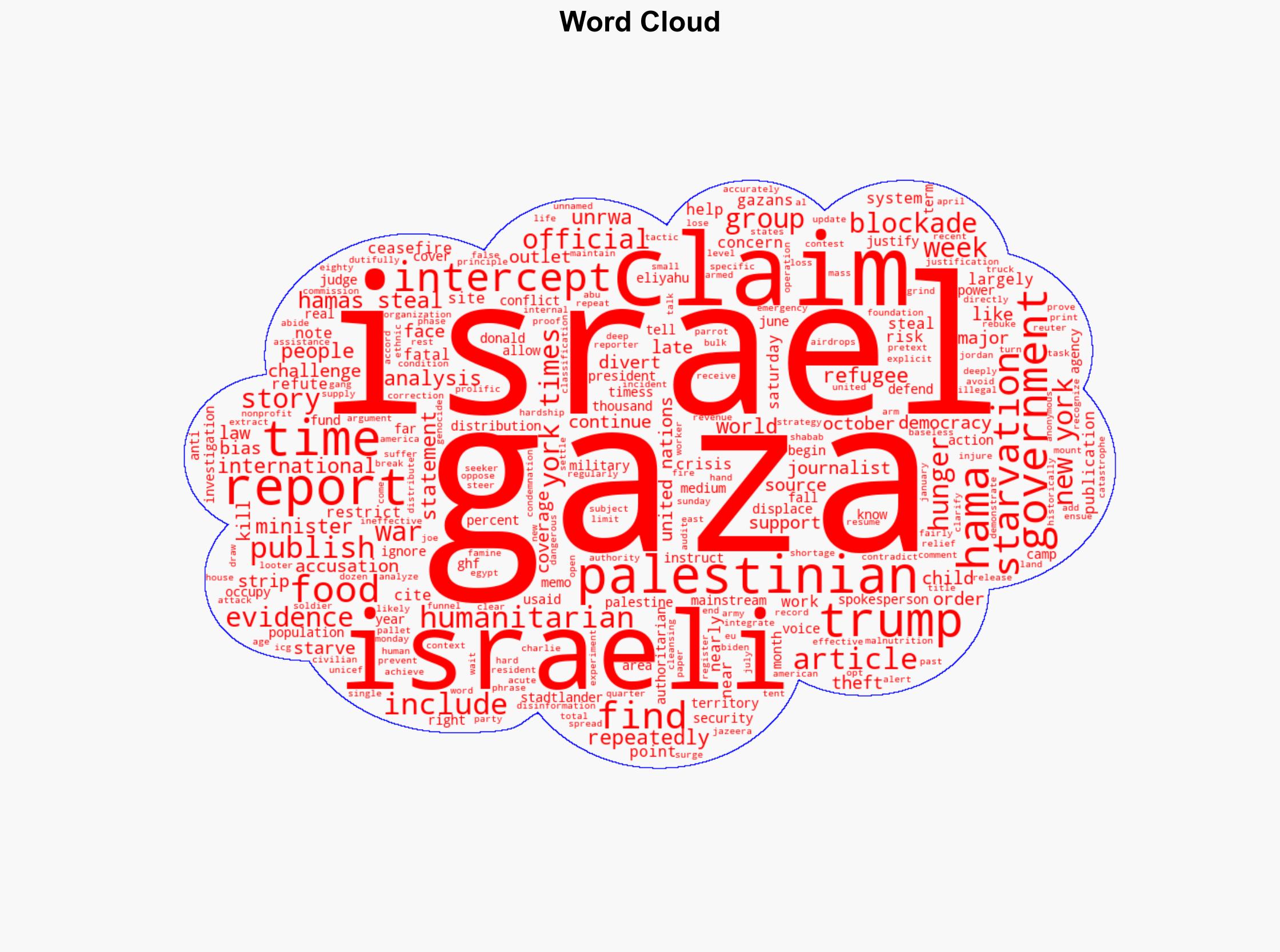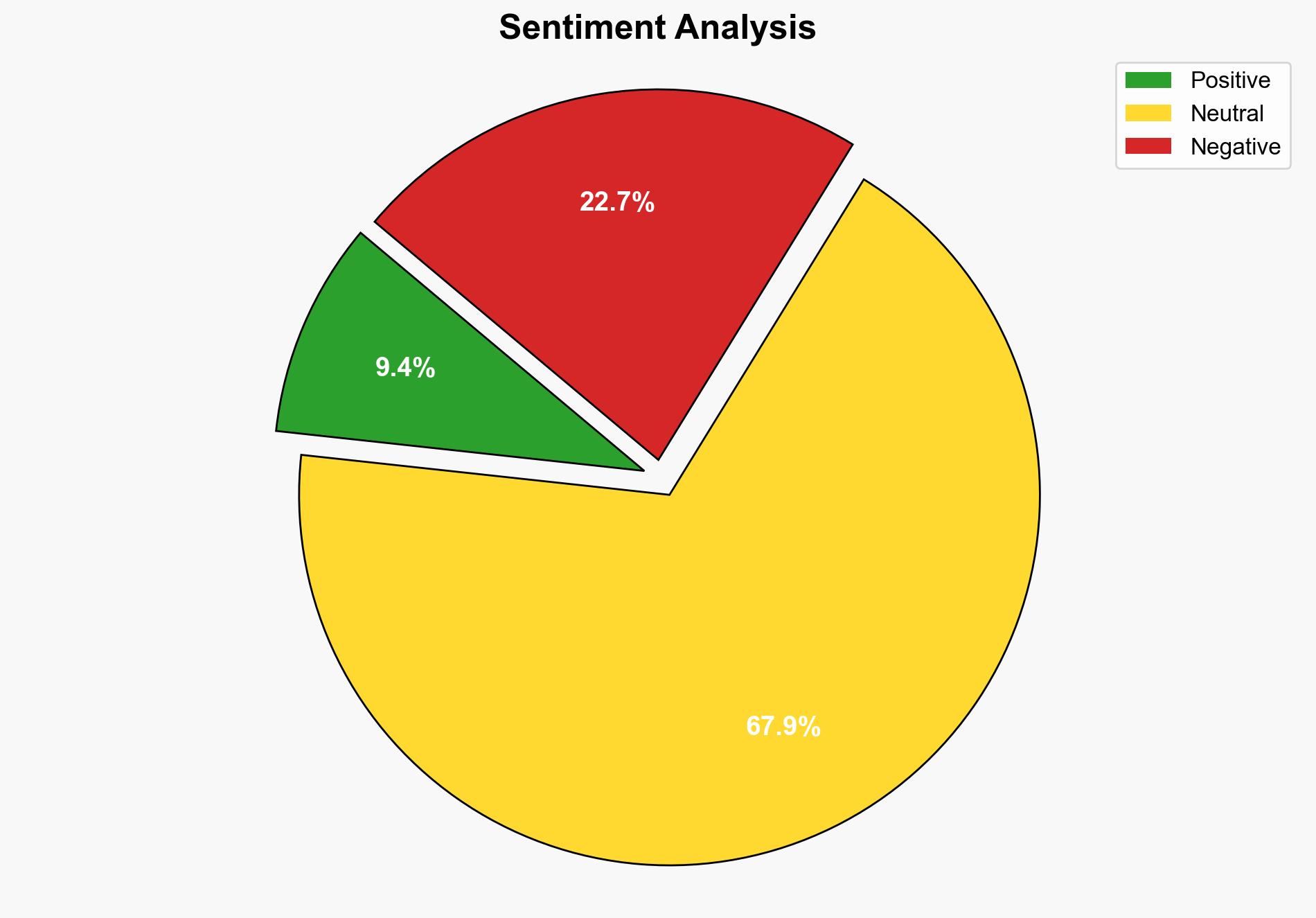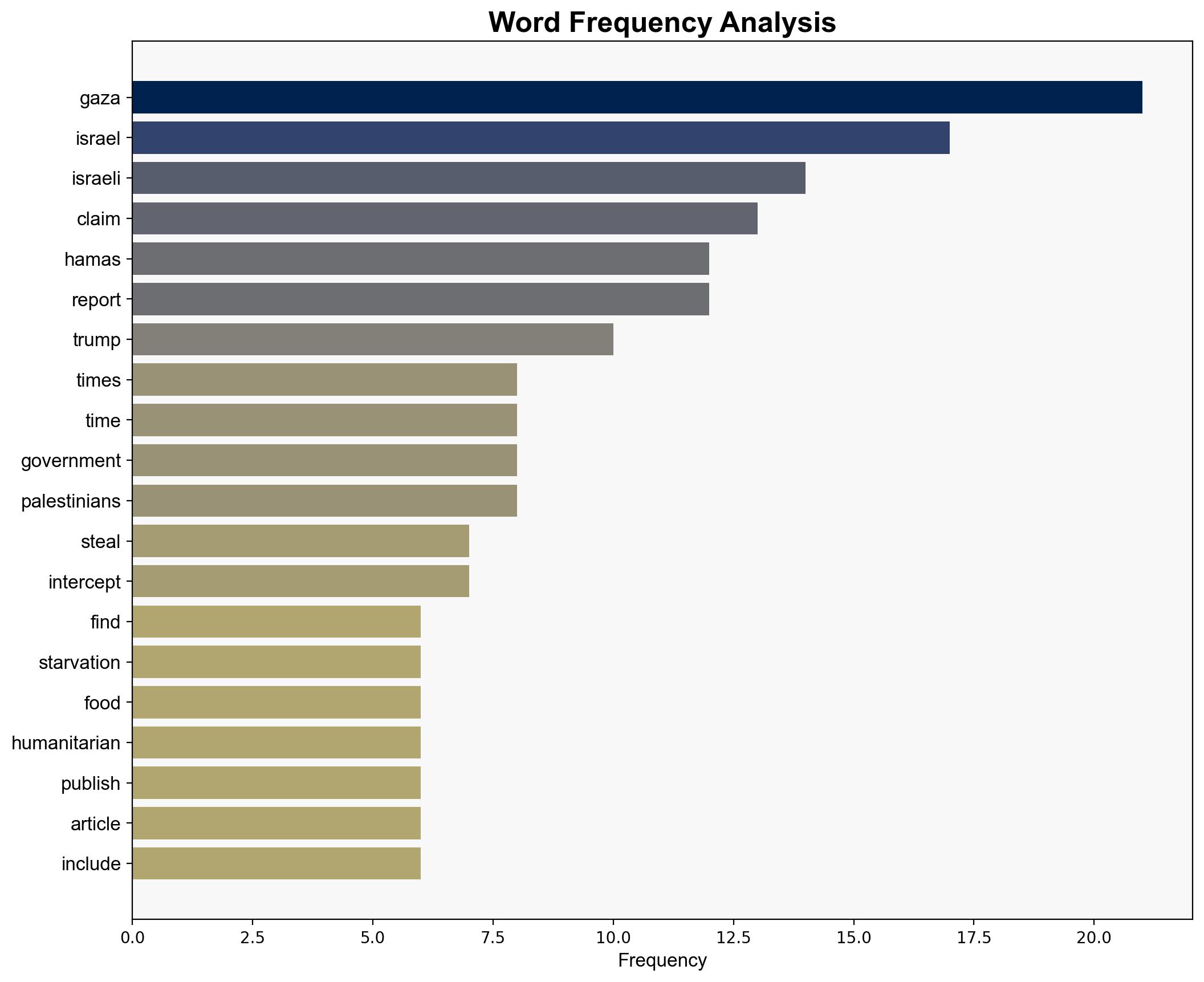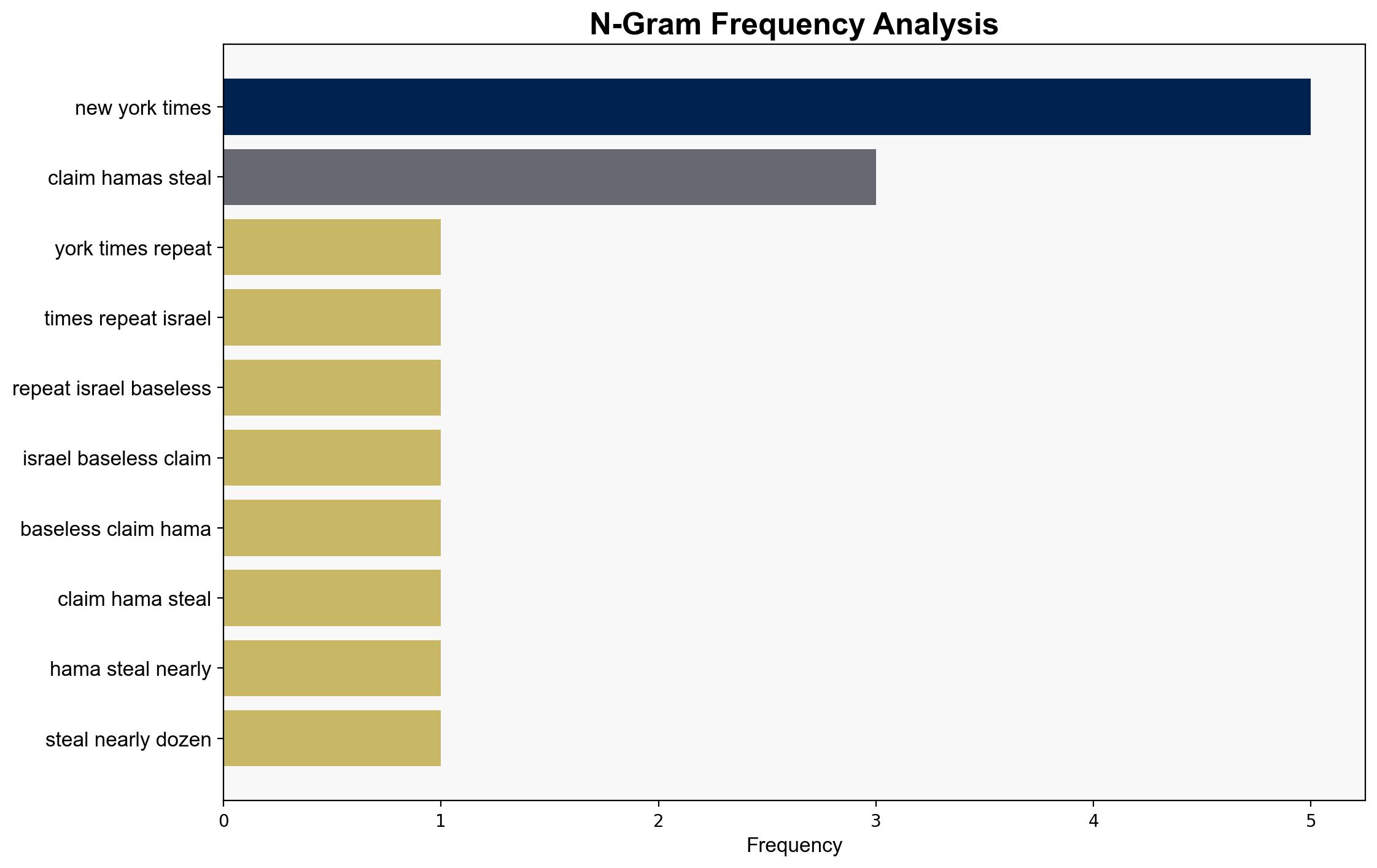The New York Times Repeated Israeli Claims of Hamas Stealing Aid Without Evidence – The Intercept
Published on: 2025-07-30
Intelligence Report: The New York Times Repeated Israeli Claims of Hamas Stealing Aid Without Evidence – The Intercept
1. BLUF (Bottom Line Up Front)
The analysis suggests a moderate confidence level in the hypothesis that Israeli claims about Hamas stealing aid are part of a broader strategic narrative rather than being substantiated by evidence. The recommended action is to prioritize independent verification of claims related to humanitarian aid diversion in conflict zones to maintain credibility and accuracy in reporting.
2. Competing Hypotheses
1. **Hypothesis A**: Israeli claims of Hamas stealing aid are accurate and based on intelligence that is not publicly disclosed. This narrative supports Israel’s strategic objectives by justifying the blockade and military actions in Gaza.
2. **Hypothesis B**: The claims are part of a strategic disinformation campaign by Israel to delegitimize Hamas and justify ongoing military and economic pressure on Gaza. This hypothesis is supported by the lack of publicly available evidence and the counterclaims by humanitarian organizations.
3. Key Assumptions and Red Flags
– **Assumptions**: Hypothesis A assumes undisclosed intelligence exists supporting the claims. Hypothesis B assumes that the lack of evidence is indicative of disinformation.
– **Red Flags**: The reliance on anonymous sources and the absence of corroborating evidence are significant red flags. The potential bias in media reporting and the historical context of misinformation in conflict zones should be considered.
4. Implications and Strategic Risks
The continuation of unverified claims could exacerbate humanitarian crises and fuel further conflict. Misinformation may lead to international tensions, affecting diplomatic relations and aid distribution. The psychological impact on populations in conflict zones could increase radicalization and recruitment by extremist groups.
5. Recommendations and Outlook
- Encourage independent verification of claims through neutral international bodies to ensure transparency and accountability.
- Promote dialogue between conflicting parties to address humanitarian needs and reduce misinformation.
- Scenario Projections:
- **Best Case**: Verification efforts lead to improved aid distribution and reduced tensions.
- **Worst Case**: Continued misinformation results in escalated conflict and humanitarian disaster.
- **Most Likely**: Ongoing media narratives without resolution, maintaining the status quo.
6. Key Individuals and Entities
– Charlie Stadtlander (New York Times spokesperson)
– United Nations Relief and Works Agency (UNRWA)
– President Joe Biden
– Former President Donald Trump
7. Thematic Tags
national security threats, media bias, humanitarian crisis, Middle East conflict





